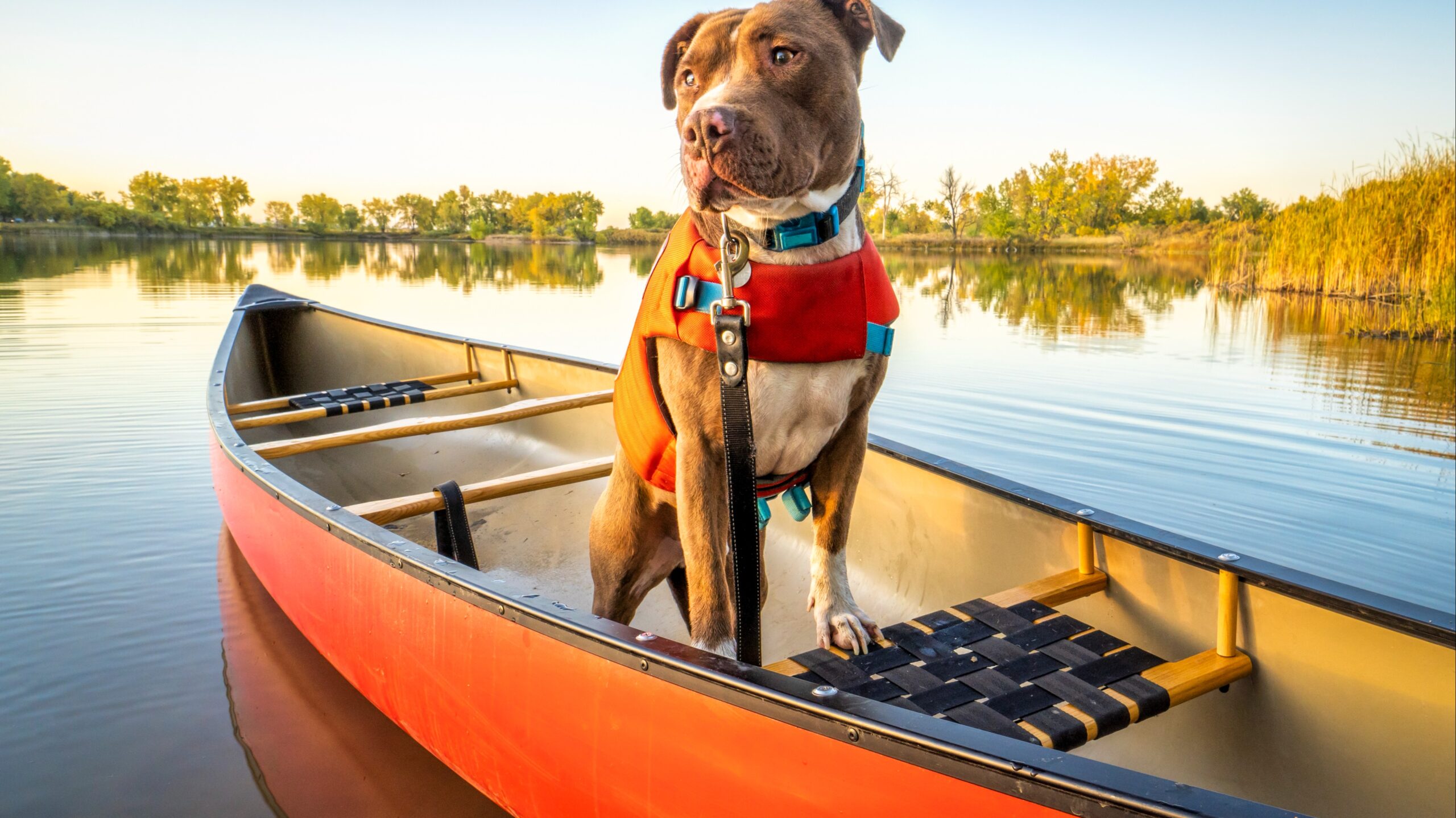
Taking your dog on a boat ride around the lake or romping on a pet-friendly beach might seem like fun ideas, but these summer activities can be dangerous for dogs. From heatstroke to illness and worse-case scenario — drowning — pet owners should be aware of best practices for summer pet safety.
First, pet parents should be mindful of the temperature outside. According to Madison Animal Care: “Experts agree that it is generally safe to take your canine pal for a walk in temperatures of up to 68F, while anything over 77F is considered very risky. This is because even at temperatures as low as 70F dogs can be at risk of developing heatstroke, a high temperature that isn't caused by a fever.”
Also, keep in mind that when the sun is out, the temperature on the ground is even hotter, so your pet’s paws will scorch. “Before taking your dog for a walk, it is important to check the temperature of the pavement or cement,” Dr. Lindsey Wendt, Holistic Veterinarian and Veterinarian Advisor to Badlands Ranch, tells LittleThings. “Placing your hand on the surface can help determine if it is too hot. If it feels uncomfortably hot or burns your hand, it is advisable for your dog to wear protective footwear to prevent burns or discomfort while walking.”
“Exercise is crucial for both the physical and mental health of dogs,” says Dr. Wendt. “However, during hot weather, it is advisable to engage in physical activities during cooler times, such as early mornings or late evenings, to prevent overheating. Additionally, it is vital to ensure that your dog has access to a constant source of water to prevent dehydration.”
While it might seem like a good idea to take your dog swimming to beat the heat, be aware that an estimated 5,000 pets drown in swimming pools annually, according to Animal Care Center.
That’s not to say that your pet can’t swim in your backyard pool. Some breeds love the water. Dr. Wendt says the best swimmers include retrievers — the Labrador, golden, Chesapeake bay. And the worst? “Brachycephalic breeds like English and French bulldogs, pugs, and Pekingese,” says Dr. Wendt.
Water safety aside, when it comes to the other elements of pools, Dr. Wendt says, “Swimming in a pool is generally safe for dogs. The chlorine levels in pools are typically diluted to a degree that dogs would need to consume a substantial amount to experience any adverse effects, which would likely manifest as mild gastrointestinal upset. However, it is important to take precautions by bathing or rinsing off your dog after swimming in a chlorinated pool to prevent potential skin irritation and dryness. Additionally, swimming can introduce water into the ears, potentially leading to ear infections. Therefore, it is advisable to have a routine ear cleaner available to use after swimming as a crucial preventive measure for maintaining your dog's health.”
If you live in a lake community, it might be tempting to take your dog out on the kayak, let them play on the beach if it’s permitted, or even walk them near the water. But beware of bacteria. “Leptospirosis is a bacterial infection that can be present in stagnant water sources such as lakes, and it can lead to serious illness in dogs,” says Dr. Wendt. “As a general rule, it is crucial to ensure that the body of water your dog is exposed to or swims in meets high quality standards that you would also consider safe for your own swimming purposes. If the water contains water snakes, it is advisable to avoid having your dog swim in that particular area to prevent potential exposure.”
If your dog has gotten bacteria from a lake, they may start to exhibit symptoms. “Vomiting, diarrhea, decreased appetite or activity are the early signs,” says Dr. Wendt. “It can progress to more severe presentations like collapse or organ failure depending on the type of bacteria they are exposed to.”
Before you start to TikTok “I’m on a Boat” with your dog, make sure your dog is safe. “Dogs can go on boats but there are some risks to consider,” says Dr. Wendt. “Dogs should always wear a life jacket while on a boat to ensure their safety. They can fall overboard, get injured from jumping off the boat, or experience nausea from seasickness. It's important to provide a secure and comfortable spot for them on the boat and to keep them hydrated. Additionally, be mindful of hot surfaces, such as the deck, which can burn their paws.”
Beaches bring different situations to monitor. “If dogs consume salt water, it can result in gastrointestinal distress, such as vomiting and diarrhea, leading to dehydration,” says Dr. Wendt. “Ingesting excessive amounts of salt water can further result in an abnormal accumulation of salt in their bodies, potentially causing neurological issues like seizures and difficulty walking. In the case of sand ingestion, it can cause gastrointestinal upset or blockage of the intestines, potentially necessitating hospitalization and even surgery.”
“The ocean can be a suitable environment for dogs, provided they are not consuming excessive amounts of salt water or encountering other potential hazards,” says Dr. Wendt. “Allowing your dog to swim, it is crucial to be cautious of riptides and strong currents. It is advisable to outfit your dog with a flotation vest and a line that enables you to maintain control over them in the event of sudden changes in water conditions.”
Though it may be tempting to recreate social media reels of dogs surfing, you might want to pause. “When considering placing your dog on a surfboard, it is prudent to ensure they are comfortable with swimming to avoid causing anxiety,” says Dr. Wendt. “Additionally, it is essential for dogs to wear a safety flotation device in case they accidentally fall off the surfboard.”
All that said, when it comes to the ocean, “it is important to remain vigilant regarding potential hazards such as deceased sea life, fish hooks, and seaweed, as ingestion of these objects can result in blockages or other illnesses,” says Dr. Wendt.
Dr. Wendt breaks down the most common illnesses or injuries pets get in the summer:
- Heat stroke/hyperthermia
- Hot spots and skin infections
- Ear infections from frequent swimming
- During the summer months, there is an increased prevalence of fleas, ticks, and mosquitoes, which are known carriers of diseases like Lyme disease and heartworm.
“It is essential to implement regular preventive measures to protect our dogs from these illnesses,” says Dr. Wendt. “This includes using reliable flea and tick control products to ward off infestations and administering appropriate heartworm prevention medications to prevent the transmission of heartworm disease.”
Dr. Wendt explains, “Heartworm is a major vector borne disease from mosquitoes. Monthly heartworm prevention is the best way to reduce your dog’s risk of contracting an infection from mosquitoes — talk to your veterinarian to see what are the most effective choices in your geographical region as it does vary. It is also important to get your dog periodically tested for heartworm disease — the frequency of this will be based on your geographical region.”




